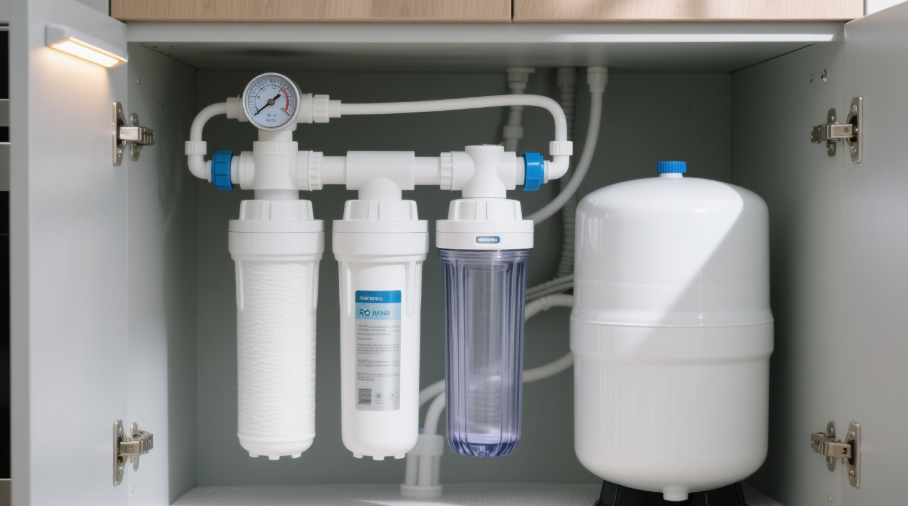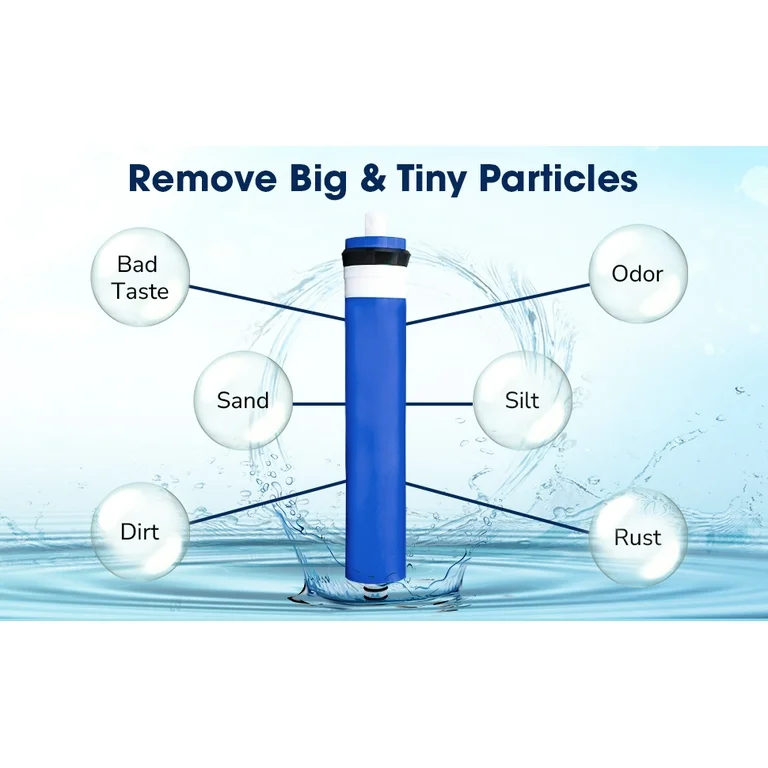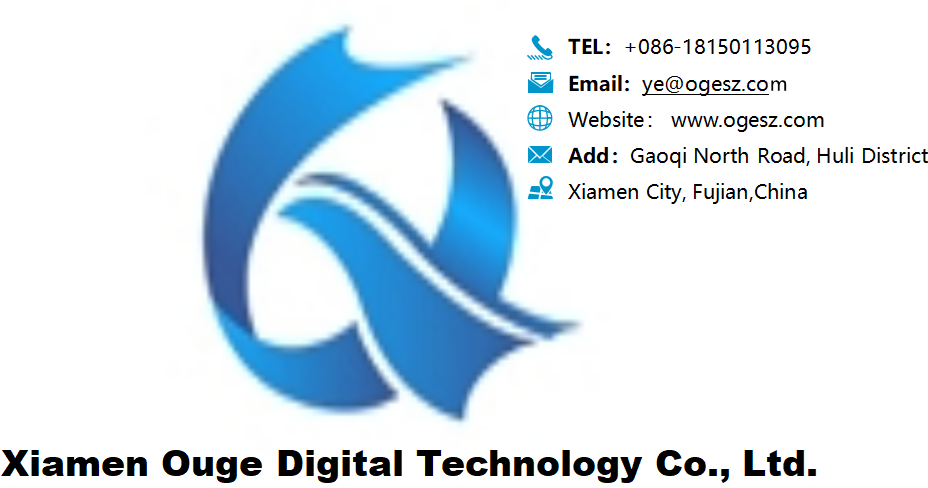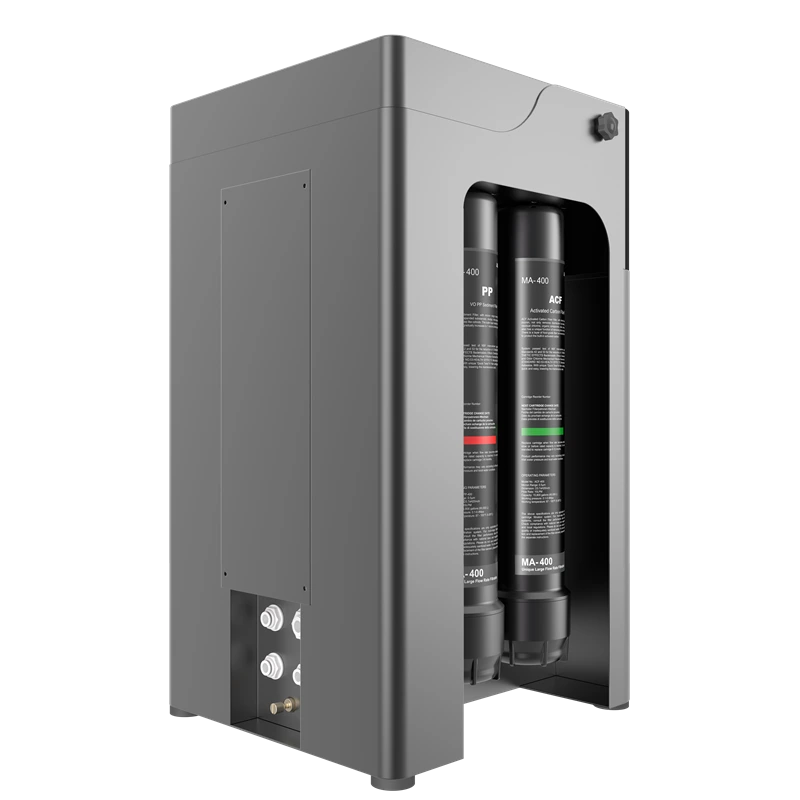Honestly, many people face this frustration: with so many water purifiers on the market, all those technical terms just give you a headache. You're afraid of making a mistake—either the purification isn't effective, or replacing the filters later costs an arm and a leg. But choosing an RO water purifier really isn't that hard! Don't let all those fancy technical terms intimidate you. Just focus on three key points: how well it filters, how easy it is to use, and whether the long-term costs are high. Today, I'm sharing all the insights I've gathered from helping others choose water purifiers. It's all down-to-earth, practical advice that will help you avoid pitfalls and pick the perfect purifier for your home!

First, let's talk about the “heart” of RO water purifiers—the RO membrane. This component acts as the ultimate filter, trapping harmful substances like heavy metals, bacteria, and scale from the water. It directly determines how clean your water will be. My neighbor once bought a cheap water purifier advertised as “RO membrane included.” When I tested the purified water with a TDS pen, it still showed over 100 (the standard should be below 50). Upon inspection, it turned out to be using a low-quality RO membrane that didn't filter properly at all! Don't blindly trust “imported” RO membranes—domestic brands now have truly reliable technology! Take Hansdon RO membranes, for example—they last 5 years, averaging just 120 yuan per year. Midea Pascal RO membranes boast a 97% salt rejection rate and can produce up to 40 tons of purified water, equivalent to 8,000 barrels of bottled water. Focus on membrane specifications: common ratings like 50G, 400G, or 600G—higher numbers mean faster water production and longer filter life. A 400G+ model suffices for a family of three. For larger households that frequently brew tea or make soup, go straight for 600G or 800G to avoid constant filter replacements.

Now let's talk about the most overlooked “hidden pitfall”—filter cartridge costs. This is the real money-eater in long-term use! Xiaolin bought a water purifier for just 800 yuan, but each filter replacement set cost over 500 yuan. With two replacements needed annually, the filters alone cost 3,000 yuan over three years—twice the price of the machine itself! Here's a simple calculation method: Divide the PP cotton filter cost by 3 months + divide the activated carbon cost by 6 months + divide the RO membrane cost by 24 months. A yearly filter cost under 500 yuan is where you break even.
Many brands now offer “long-lasting filters.” Take Haier filters, for example—they cost just 9 yuan per month, which works out to less than 30 cents per day. Families on a tight budget should go for it without hesitation! Additionally, prioritize models with filter replacement alerts: Midea's Smart Display Faucet shows real-time TDS readings; Xiaomi water purifiers let you remotely check filter status via their app, making replacement timing crystal clear—no more getting pressured into premature replacements by after-sales.

Water flow rate must also match your needs, or it’ll drive you crazy! My old purifier dispensed water like squeezing toothpaste—waiting 5 minutes for a cup in the morning, stomping my feet in frustration while cooking. After switching to a 600G model, filling a 200ml cup takes just 10 seconds. Morning coffee and evening soup preparation are now a breeze. 1-2 person households: 400G is generally sufficient; Families of three for daily cooking: Opt for 600G or higher; For renters: Strongly recommend countertop RO purifiers that require no installation. Just plug it in and go—you can take it with you when you move, making it far more convenient than bottled water! For example, a 1200G model delivers a flow rate of 3.3L/min, filling a 250ml cup in just 3 seconds. It easily handles peak usage times even in larger households.
Wastewater ratio is key to saving money—don't underestimate it! My previous purifier had a 1:3 waste ratio—meaning every cup of purified water produced 3 cups of waste water, costing me over 30 yuan extra in monthly water bills. Better models now typically achieve 1:1, while some Xiaomi and Qinyuan models reach 3:1 with 80% water recovery rate, far exceeding the national Class 1 water efficiency standard (60%). But don't obsess over achieving the “ultra-low wastewater ratio.” If your household water quality is poor (like in areas with severe limescale buildup), an excessively low ratio can actually overload the RO membrane, shortening its lifespan. First, test your household water quality: If TDS exceeds 500, opting for a 1:1 model is more reliable. For better water quality, a 2:1 model offers higher cost-effectiveness. Some Midea models even feature intelligent wastewater ratio adjustment, automatically optimizing based on water quality—saving both effort and water!
Finally, a few tips to avoid pitfalls:
Don't believe exaggerated claims about “filtering all impurities.” RO water purifiers primarily remove heavy metals and bacteria. To eliminate residual chlorine and improve taste, check for activated carbon filters—like our coconut shell activated carbon—which leaves water with a refreshingly sweet taste.
Always clarify installation fees upfront. Most brands offer free basic installation, but complex setups may incur extra charges of 100-150 yuan.
Prioritize after-sales support. Brands like Hansdon boast over 5,000 service centers nationwide for swift repairs.
Choosing an RO water purifier is like picking shoes—expensive doesn't always mean better. What suits your home is key! How many people live there? What's the water quality like? Are installation conditions feasible? Leave a comment below, and I'll help you decide! After all, drinking water is a daily necessity—don't let the wrong choice affect your quality of life.

 Reverse Osmosis Scaling Right After Startup? Here's What You Need to Know About Prevention and Treatment!
Reverse Osmosis Scaling Right After Startup? Here's What You Need to Know About Prevention and Treatment!
 Reverse Osmosis Scaling Right After Startup? Here's What You Need to Know About Prevention and Treatment!
Reverse Osmosis Scaling Right After Startup? Here's What You Need to Know About Prevention and Treatment!
 Three Certain Trends in Commercial Water Purification Over the Next Five Years
Three Certain Trends in Commercial Water Purification Over the Next Five Years
 Eight Different Methods for Pure Water Treatment Equipment Processes
Eight Different Methods for Pure Water Treatment Equipment Processes